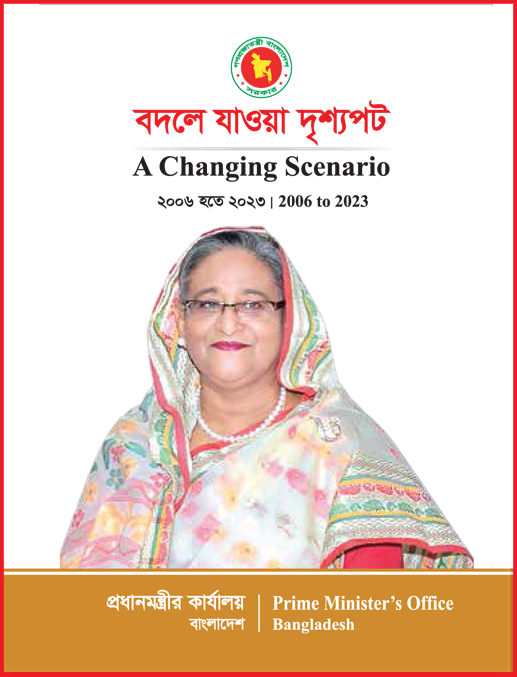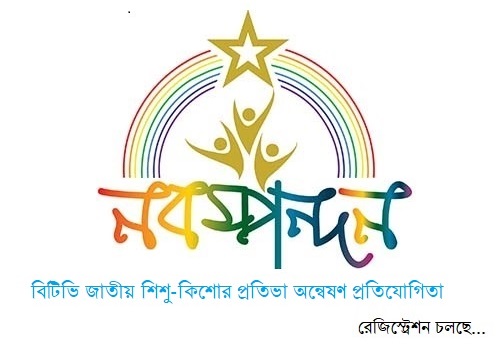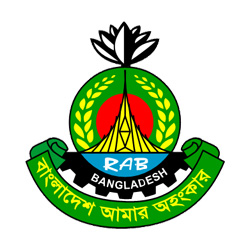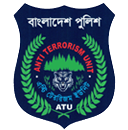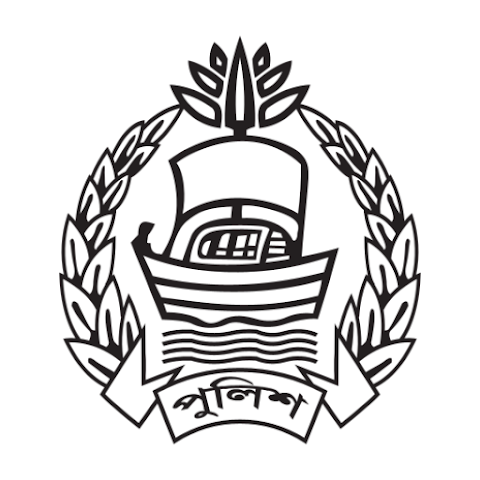এনএটিপি-২ সম্পর্কে
Bangladesh agriculture plays key role in economic development of Bangladesh and provides food, feed, fiber and fuel to her citizens and animals. In Bangladesh, agriculture sector comprises crops, livestock, fisheries and forestry the sector makes an important contribution to GDP of the country, provides employment of about half of the labor force, remains a major supplier of raw materials for agro-based industries, and contributes significantly to export earnings of Bangladesh. Besides, it is the largest source of market for a variety of consumer goods, particularly in the rural areas. Agriculture occupies some three-quarters of the scarce land space of the country and supports the livelihoods of the majority of the population, with some 67% of the population living in rural areas and over 43% of the country’s total labor force engaged in it. Though the share of agriculture in GDP has declined from over 50% at the time of independence to around 17% currently (crops, livestock, fisheries, forestry combined), but the total contribution of agriculture to GDP has increased, and still it remains the predominant sector in terms of employment and livelihood. Per capita food grain availability in Bangladesh has increased from 453 grams in FY1992-93 to 605 grams in FY2010-11 due to the admirable performance of the sector. While overall poverty has significantly declined over the last two decades, the poverty in rural areas has not declined as fast as in urban areas; the proportion of people living in extreme poverty in rural areas is still three times higher than in urban areas. Hence, improvement of agriculture and acceleration of its growth is essential for achieving further economically, socially and environmentally sustainable economic growth and poverty reduction.
Agriculture in Bangladesh is characterized by small farm and rice-dominated farming systems. The productivity of rice and other crops is low and there are large yield gaps between farmer’s fields and research trials. The same is true for other agricultural commodities such as fisheries and livestock. Diversification of agricultural production systems to high value commodities is still slow with limited post-harvest value addition. Bangladesh has made noteworthy progress in education, health and road communication sectors. Bangladesh has already entered the ranks of middle income country. The country has set a target of average GDP growth rate of 7.4% in the recently approved 7th five year plan. To attain the rate and to keep pace with the population growth, agriculture must grow at a constant rate of minimum 3-3.5% per year. There will be serious gap between demand and supply if the current rate of productivity and production continues. Thus, the production rate and productivity in all the subsectors of agriculture has to be elevated to meet the future demand. To that effect, the Government of Bangladesh (GOB) gives top priority to the development of agriculture sector through its increased productivity, production, supply chains, value addition and market linkages.
The government gave over Tk. 240 billion in subsidy to agricultural sector during the last four and a half years and the specialized and other state-owned banks distributed Tk. 460 billion as agriculture loans. Besides, agriculture loans were distributed among sharecroppers at a concessionary rate of interest. As a result of government measures, rice production increased to 37.3 million metric tons from 33.3 million metric tons (Agriculture and 2014-15 Budget-Financial Express, 21 May 2014).
Reaching technologies to the farmers requires technology generation and dissemination through the research and extension systems. Both research and extension in Bangladesh remain in the public sector. National Agricultural Research System (NARS) is responsible for generating agricultural related technologies and Department of Agricultural Extension (DAE), Department of Fisheries (DOF), and Department of Livestock Services (DLS) in the public sector are responsible for extension of generated technology to the farmers. Though the agricultural research has made an impressive contribution to crop food security (particularly with rice, potato and vegetables), but research and extension in some key sub-sectors (e.g. livestock, fisheries) has yet to reach its potential productivity in terms of releasing and adopting of sufficient useful technologies (including a range of new climate-smart technologies for production and post-harvest). In Bangladesh, private investment in research and extension is low. The NGOs, local government and community organizations are coming up but very slowly. Therefore, the public sector must continue to play a leading role in agricultural research and extension.
Poverty reduction in rural areas depends crucially on growth in agricultural productivity, which is driven by investment in infrastructure, generation of new or improved technologies adapted to changing climate, and their adoption by farmers and other supply chain actors (e.g. traders, processors). Sustainable intensification and diversification of agriculture through technological change requires an efficient and productive national agricultural technology system, comprising agricultural research (technology development and refinement) and agricultural extension (technology dissemination and adoption). This needs to be supported by appropriate value addition and market linkages through smallholders’ participation in emerging/established commodity supply chains for higher value agriculture. To achieve these strategic goals, the GOB sought the support of development partners such as the World Bank to provide technical and financial support to activities aimed at boosting agricultural production through productivity enhancement, and increasing smallholders’ income. In order to improve agricultural productivity and farm income, on the request of the Government of Bangladesh, the World Bank agreed to support a long term agricultural development program over a period of 15 years to be implemented in three phases of five years each with the first phase beginning in July 2007. IFAD also agreed to co-finance the program with the World Bank. Accordingly, the National Agricultural Technology Project (NATP): Phase-I (NATP-1) was designed with the development objective of improving the effectiveness of national agricultural technology system (including agricultural research, extension and development of supply chains) and increasing agricultural productivity and farm income in Bangladesh. NATP-1 was initiated in July 2007 and completed in December 2014. NATP-1 has significant achievements in generating technologies, increasing the effectiveness of extension and research systems, development of supply chains and broadening linkages between research-extension-farmers across the project areas. Research component generated valuable technologies and information including new varieties/breeds/fingerlings pertinent to stable and higher production of crops, livestock and fisheries. The technologies gained acceptability among the farmers need scaling-up. Under extension component, an effective farmer platform has been established in 120 upazilas under 25 districts for bottom-up planning, demonstrations, trainings and technology transfer. Approximately 0.4 million farmers have been benefitted through training, demonstration support, setup of rural extension service centers (FIAC), federation of CIGs to Producers Organizations (POs), etc. Supply chain component covered 20 upazilas focusing on farmer-market linkage for supply of quality produces with minimization of postharvest loss of high value agro-commodities through 25 Commodity Collection and Marketing Centers (CCMC) and strengthening capacity of stakeholders in supply chain management and agro-enterprise development.
The World Bank, jointly with IFAD and USAID, decided to provide financial support to GOB for the National Agricultural Technology Program-Phase II Project (NATP-2), schedule to begin in October 2015. The Bank has long supported the promotion of agricultural technology and the delivery of extension services to farmers in Bangladesh. NATP-1, initiated in July 2007 and completed in December 2014, is a key milestone in this long history of World Bank engagement. NATP-1, co-funded by IFAD, had been designed as the first phase of a national program whose medium-term objective was to increase income and reduce extreme poverty and hunger by improving agricultural productivity and performance of the national agricultural technology system. NATP-1 has achieved some such gains by increasing efficiency and effectiveness of the agricultural research and extension systems, but there is yet much to be done to broaden and deepen such needed gains, as well as to add greater value to the output of the agricultural sector by strengthening its commercialization. Also a key lesson learned from the implementation of NATP-1 is the need to look beyond productivity increases and focus as well on facilitating value addition and market linkages to ensure sustainability of farmer groups and in particular of Producer Organizations (POs).
About NATP-2
NATP aroused a new hope and dimension in the field of Bangladesh agriculture which might create a bright future for Bangladesh. The NATP-2 Project would hopefully bring about changes in the traditional scenario of Bangladesh agriculture towards modern agricultural system based on the application of information and communication technology tools and renewable energy technologies including mobile technology. NATP-2 has important segment for creating market access network through value and supply chain activities for the farmer holders community. The overall objective of NATP is to support GOB’s strategy to improve national agricultural productivity and firm income, with particular focus on small and marginal farmers covering 35% female farmers as well within the NATP-2 project target area.
National Agricultural Technology Program – Phase II Project (NATP-2), a six year project (Project implementation period: started with the financial support of the World Bank, IFAD, UDAID and GoB and was approved on 12 April 2016. However the project implementation started on 02 August 2016. NATP-2 has two Sponsoring Ministry/Division (i) Ministry of Agriculture (MOA), Lead Ministry and (ii) Ministry of Fisheries and Livestock (MOFL) and five components:- (1) Project Implementing Unit of Bangladesh Agricultural Research Council (PIU-BARC), MOA, (2) Project Implementing Unit of Department of Agricultural Extension (PIU-DAE), MOA, (3) Project Implementing Unit of Department of Fisheries (PIU-DOF), MOFL, (4) Project Implementing Unit of Department of Livestock Services (PIU-DLS), MOFL and (5) Project Management Unit (PMU), MOA. National Agricultural Research System (NARS) institute and public universities participated in research activities under PIU-BARC. Extension activities were implemented by DAE, DOF and DLS. The project was implemented in 270 upazilas of 57 districts in 8 divisions. The Project Management Unit (PMU) manages the activities of all the components and acted under the guidance of the Joint Project Steering Committee (JPSC).



